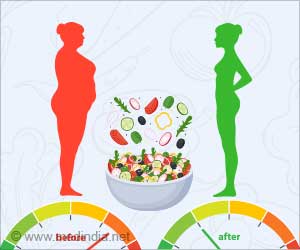
Traditionally, three days following fertilization, embryos are placed into the uterus during IVF treatment. It is now also feasible to do this after five days thanks to advancements in laboratory procedures.
Researchers believed that this would improve the likelihood of a successful pregnancy. The success rate of the IVF trajectory is not influenced by the day of transfer, according to a study conducted by Amsterdam UMC and Radboud University Medical Center (1✔ ✔Trusted Source
Cumulative live birth rate of a blastocyst versus cleavage stage embryo transfer policy during in vitro fertilisation in women with a good prognosis: multicentre randomised controlled trial
).
In the Netherlands, in vitro fertilization (IVF) accounts for one out of every thirty conceptions. During IVF, egg cells are fertilized outside of the body and then grown in a lab for a few days.
Effect of Embryo Transfer Timing on IVF Outcomes
The remaining embryos are frozen and later one or more are inserted back into the uterus. The lab phase typically lasts three days, but advancements have allowed for embryo transplants after five days.
It is believed that after five days, only viable embryos remain, increasing the chances of a successful pregnancy, although this results in fewer embryos in storage. Previous studies have suggested that transferring embryos on day five, rather than day three, increases the likelihood of success.
However, these studies did not consider the outcomes of the entire IVF process, including any subsequent frozen embryo transfers. Research from Radboud University Medical Center, in collaboration with Amsterdam UMC, has addressed this gap.
The study was conducted in 21 Dutch IVF centers among more than 1,200 women. At least four embryos had to be available for transfer two days after fertilization.
Advertisement
In half of the women, embryos were transferred on day three, and in the other half on day five. The outcome was the chance of a successful pregnancy during the entire IVF trajectory. This turned out to be the same in both groups, around sixty per cent.
Day 3 vs Day 5 Embryo Transfer
The researcher explains the results: ‘Ultimately, IVF is about a successful pregnancy, and not only about the chances of success after the first transfer. Abroad, where IVF care is not insured, clinics often advertise their success rates from the first transfer on day five. In doing so, they provide an incomplete representation of the situation. Our study shows that women should have a choice about the moment of transfer.’
Advertisement
- The overall success rate of IVF was the same for both day three and day five transfers.
- There was a higher chance of a successful pregnancy after the first transfer on day five.
- Fewer miscarriages were observed in the day five transfer group.
- More embryos could be frozen for later use when transferred on day three.
- The risk of premature birth was somewhat lower in the day three transfer group.
‘It is a very personal decision’, says clinical embryologist Liliana Ramos, one of the study leaders. For some people, getting pregnant as quickly as possible is very important, for example, if the woman is older.
Someone else attaches more value to a larger number of frozen embryos or wants to keep the chance of premature birth as small as possible. There is no guideline regarding the day of transfer.
Therefore, a couple who wants to become pregnant must discuss it with the doctor and make a choice together.
Reference:
- Cumulative live birth rate of a blastocyst versus cleavage stage embryo transfer policy during in vitro fertilisation in women with a good prognosis: multicentre randomised controlled trial- (https:www.bmj.com/content/386/bmj-2024-080133)
Source-Eurekalert



